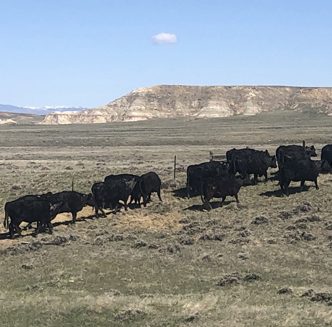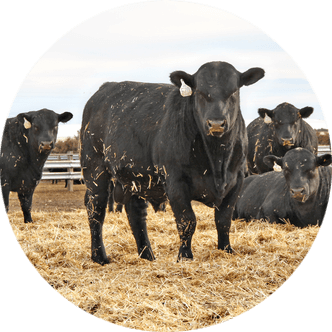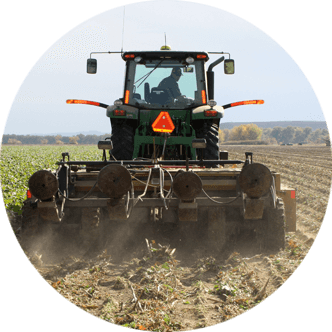Administration makes bold announcements regarding beef
On Oct. 17, President Donald Trump announced a new campaign to lower beef prices for U.S. consumers. This news had immediate and significant impacts on the market, with feeder cattle closing more than nine dollars to end the week.
The president made bigger waves only a few days later when he proposed to expand imports of Argentine beef as a means of lowering record-high prices, encouraging cattle producers to “get prices down.”
These suggestions angered cattlemen and ag industry groups across the country, tearing a rift between the White House and some of Trump’s long-standing supporters.
At the same time, U.S. Secretary of Agriculture Brooke Rollins announced a sweeping strategy to strengthen the American beef industry and reinforce long-term supply chain stability.
Producers push back
Due to years of persistent drought and increased input costs, the nation’s beef cattle herd is the lowest it’s been in over seven decades, resulting in record-high prices for both live cattle and beef at the meat case and some rare profitable years for producers.
In an Oct. 22 Truth Social post, Trump claims the rewards cattle producers are reaping come from tariffs he has imposed on imports and encourages them to lower prices so consumers will continue buying beef.
“The cattle ranchers, who I love, don’t understand the only reason they are doing so well for the first time in decades is because I put tariffs on cattle coming into the U.S., including a 50 percent tariff on Brazil,” the president writes. “They also have to get their prices down, because the consumer is a very big factor in my thinking, also.”
Multiple ag organizations voiced strong opposition to this plan, believing it to be misguided with a large risk of negatively impacting markets and producers alike and doing “almost nothing for consumers.”
In an Oct. 21 Associated Press article, Journalists Josh Funk and Sarah Raza say ranchers are arguing the scale of Argentine beef available for import is too small to meaningfully lower consumer prices, but large enough to create market uncertainty for producers.
The two reporters note Argentine beef currently only accounts for about two percent of U.S. beef imports, making it doubtful the measure will relieve price pressures.
In the same article, Kansas State University Economist Glynn Tonsor says the move could actually have the opposite effect, discouraging ranchers from expanding their herds due to increased policy uncertainty.
Other economists agree, noting, although Trump is calling for lower prices, high prices are needed to incentivize ranchers to expand their herds.
StoneX Chief Commodities Economist Arlan Suderman tells Reuters, “President Trump needs to take a class in supply and demand. Cattle prices are high because demand is stronger than the supply. If we want to increase the supply of beef long term, we don’t do it by lowering prices.”
In a statement made on Oct. 22, NCBA Chief Executive Officer Colin Woodall says the association and its members will not stand behind Trump’s proposal and encourages the president to simply “let the cattle markets work.”
“If President Trump is truly an ally of America’s cattle producers, we call on him to abandon this effort to manipulate markets and focus instead on the promised New World screwworm facilities in Texas; making additional investments to protect the domestic cattle herd from foreign animal diseases such as foot and mouth disease (FMD) and addressing regulatory burdens, such as delisting the gray wolf and addressing the scourge of black vultures,” Woodall says.
In an interview with PBS News, NCBA President Buck Wehrbein notes the association isn’t only concerned about beef coming in, but the quality of beef as well.
“Argentina has a long history of FMD, and USDA has not done a good enough job yet of making sure everything coming in from there is safe,” Wehrbein says. “So, we’re not only concerned about the amount of beef coming in, but also animal health issues. This is bigger than just cattle prices.”
He reiterates NCBA’s hope the administration will give markets time to take care of themselves.
“The main message is markets work and they will work. What we don’t need is anybody manipulating them,” he concludes.
Other state and national groups including the U.S. Cattlemen’s Association (USCA), American Farm Bureau Federation, National Farmers Union, Farm Action, Iowa Farm Bureau Federation, Texas Department of Agriculture, South Dakota Cattlemen’s Association and Iowa Cattlemen’s Association have expressed their disappointment in this move as well.
USCA President Justin Tupper comments, “The cost of producing beef today is accurately represented in consumer markets where it is sold. Ranchers are facing historic highs for feed, fuel, labor and land, and those costs have risen far faster than beef prices on grocery shelves.”
“Efforts to support consumers must consider the economic realities on the ground and ensure the voices of independent ranchers lead the discussion,” Tupper adds. “Market-driven prices – not mandates or panic interventions – have delivered value for generations. Let’s focus on transparency, market integrity and maintaining conditions for sustainable rural economies.”
Rollins rolls out plan
Amid the backlash, Rollins formally unveiled a national strategy with a three-pronged approach to “fortify the American beef industry,” focusing on protecting and improving the business of ranching; expanding processing, consumer transparency and market access and building demand and domestic supply.
Key components of the plan include increasing grazing access on federal lands, streamlining permitting processes, unlocking vacant allotments, increasing disaster relief, making risk management tools more affordable and implementing new standards for compensating producers for losses caused by predation.
The plan also looks to expand processing capacity and market transparency, as the USDA aims to boost U.S. processing infrastructure and promote locally-raised beef to schools and institutional buyers.
Furthermore, the plan seeks to stabilize beef supply chains while giving consumers more affordable choices, with the administration calling the beef supply chain “a matter of national security.”
In an Oct. 22 press release, USDA notes the U.S. has lost over 17 percent of family farms – more than 100,000 operations – since 2017, all while the national herd is at a 75-year low and demand for beef has grown nine percent over the past decade.
“Because increasing the size of the domestic herd takes time, USDA is investing now to make these markets less volatile for ranchers over the long term and more affordable for consumers,” the press release reads.
Rollins comments, “America’s food supply chain is a national security priority for the Trump administration. We are committed to ensuring American people have an affordable source of protein and America’s ranchers have a strong economic environment where they can continue to operate for generations to come.”
“At USDA, we are protecting our beef industry and incentivizing new ranchers to take up the noble vocation of ranching,” she continues. “Today, USDA will immediately expedite deregulatory reforms; boost processing capacity, including getting more locally-raised beef into schools and working across the government to fix longstanding commonsense barriers for ranchers like outdated grazing restrictions.”
Hannah Bugas is the managing editor of the Wyoming Livestock Roundup. Send comments on this article to roundup@wylr.net.





